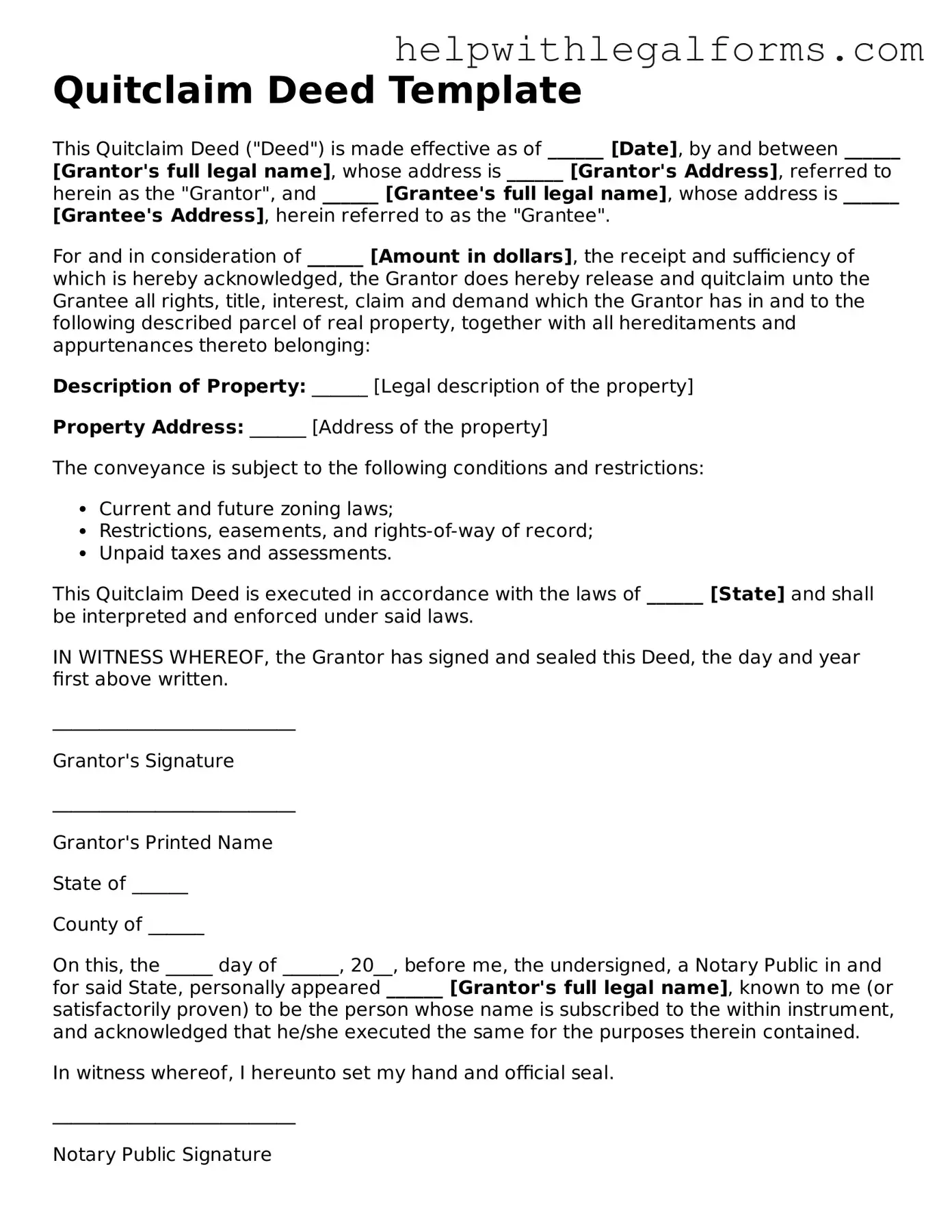Quitclaim Deed Template
This Quitclaim Deed ("Deed") is made effective as of ______ [Date], by and between ______ [Grantor's full legal name], whose address is ______ [Grantor's Address], referred to herein as the "Grantor", and ______ [Grantee's full legal name], whose address is ______ [Grantee's Address], herein referred to as the "Grantee".
For and in consideration of ______ [Amount in dollars], the receipt and sufficiency of which is hereby acknowledged, the Grantor does hereby release and quitclaim unto the Grantee all rights, title, interest, claim and demand which the Grantor has in and to the following described parcel of real property, together with all hereditaments and appurtenances thereto belonging:
Description of Property: ______ [Legal description of the property]
Property Address: ______ [Address of the property]
The conveyance is subject to the following conditions and restrictions:
- Current and future zoning laws;
- Restrictions, easements, and rights-of-way of record;
- Unpaid taxes and assessments.
This Quitclaim Deed is executed in accordance with the laws of ______ [State] and shall be interpreted and enforced under said laws.
IN WITNESS WHEREOF, the Grantor has signed and sealed this Deed, the day and year first above written.
__________________________
Grantor's Signature
__________________________
Grantor's Printed Name
State of ______
County of ______
On this, the _____ day of ______, 20__, before me, the undersigned, a Notary Public in and for said State, personally appeared ______ [Grantor's full legal name], known to me (or satisfactorily proven) to be the person whose name is subscribed to the within instrument, and acknowledged that he/she executed the same for the purposes therein contained.
In witness whereof, I hereunto set my hand and official seal.
__________________________
Notary Public Signature
My Commission Expires: ______
